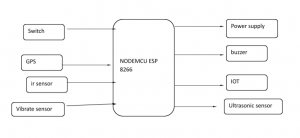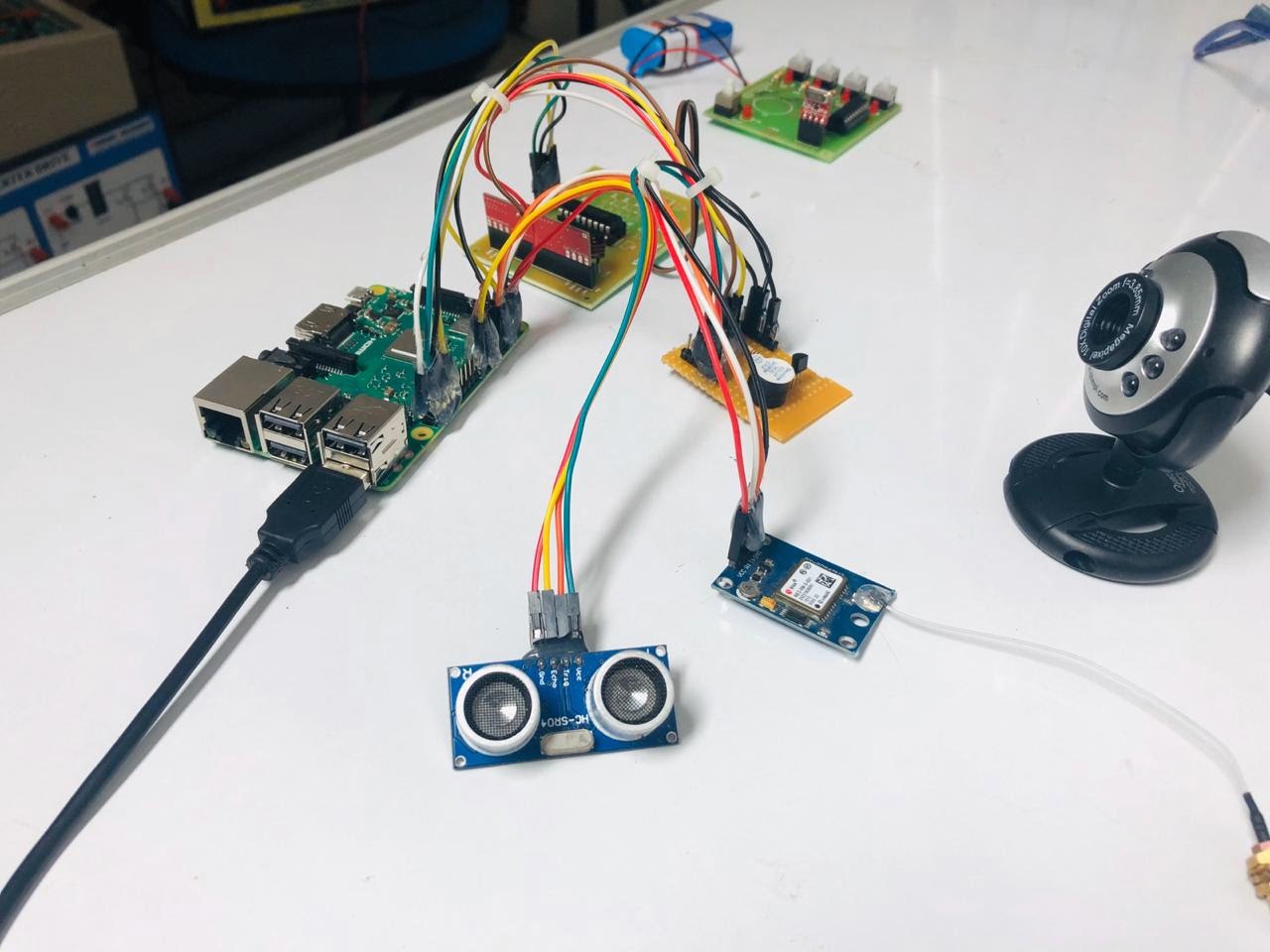Description
Vehicle Collision Detection and Rescue Sysem using IoT and Arduino
ABSTRACT:
This paper aims to improve the response time of the emergency response department to be informed of vehicle accidents in Malaysia. The primary impact of this work was to reduce the waiting period for accident victims to receive medical assistance and be rescued from a catastrophic vehicle accident. The conceptual idea of achieving this was by accommodating sensors and a microcontroller in a vehicle to compute the displacement of the vehicle. The system was developed using a vibration sensor to determine the collision impact of an accident and a gyro sensor to determine the x-y displacement of the vehicle. When an accident occurs, the instantaneous coordinates of the vehicle will be captured using a GPS module and transmitted to the emergency response department via a GSM module. The coordinates are visualized on a registered mobile phone at the emergency response department and mirrored to a desktop’s Pushbullet application. With that, necessary emergency response units can be deployed to the accident location. The outcome of this project utilizes a gyro sensor to monitor angles between 45° – and 315° and a vibration sensor at a collision impact frequency of more than or equal to 90 Hz. The prototype can be a viable system to be incorporated by vehicle manufacturers in Malaysia to improve the safety features of a vehicle and ensure better reliability of vehicle accident detection and reporting system. Vehicle Collision Detection and Rescue Sysem using IoT and Arduino
Keywords— Vehicle Accident Detection System, GSM, GPS, IoT, Pushbullet, Gyro sensor, Vibration sensor, VADS
Vehicle Collision Detection and Rescue Sysem using IoT and Arduino
INTRODUCTION:
The number of road accidents in Malaysia has been increasing at an alarming rate. In 2018, the Ministry of Transport (MoT) Malaysia reported a total of 548,-598 road accidents; were 6,-284 of them were casualties that resulted in death [1]. The life and death status of a victim is decided by the response time of the emergency response department (ERD) which varies depending on the speed at which the accident information is received by the ERD [2]. The importance of having a faster response time when an accident has occurred is crucial to accident victims. Extensive analysis has shown that decreasing the accident response time by a minute, would help increase the chances of saving an individual by up to 6% [3]. Characteristically, the response time of an accident is associated with the location and severity of an accident coupled with the congestion caused around the location of the accident. During minimal traffic congestion, the occurrence of an accident would increase the response time for the ERD to be notified about the accident, sometimes up to 24 hours [2]. The proposed Vehicle Accident Detection System using the Internet of Things (VADS – IoT) was introduced and developed to reduce the time taken for an accident to be reported to the ERD. The incorporation of IoT extends the network connectivity between different systems with the minimal human intervention [4]. The communication between the onboard sensors and Global System for Mobile Communications (GSM) module available in the vehicle’s central processing box (CPB) forecasts significant improvements in accident data transmitted toward the ERD, thus ensuring the system is reliable, efficient, and effective [5]. The VADS was equipped with a gyro sensor for measuring displacement angles of a vehicle and a vibration sensor to measure the instantaneous collision impact frequency during an accident.
EXISTING SYSTEM:
There are several papers to detect accidents but none of them are accurate since they rely on external input to detect accidents. One such concept is to detect accidents by using google maps, that is whenever there is traffic conjunction it would imagine that there is an accident. Since it depends on traffic conjunction it cannot be used when there is no traffic especially at night. Another paper deals with image processing where accidents will be detected after capturing an image of vehicles colliding with each other. Since cameras are not available in each and every road this is not practical to use
PROPOSED SYSTEM:
To overcome the existing system issues, a novel approach is proposed. This proposed system does not depend on external inputs to detect accidents, it is a self-accident detection technique. In this system, there is a setup that contains an accident-detection sensor, GPS receiver, and ESP 32 that work collectively to detect accidents instantly and will send location coordinates to an ambulance. Our proposed system includes another setup in an ambulance that can observe the patient’s vital information continuously so that the staff can keep him/her stable until they reach a nearby hospital. This ambulance unit contains various sensors viz., BP sensor, pulse sensor, and glucose dripping sensor along with Arduino-nano and display.
BLOCK DIAGRAM:

Vehicle Collision Detection and Rescue Sysem using IoT and Arduino
CONCLUSION:
This work has developed a VADS – IoT to improve the response time of the ERD by answering the justified initial objectives. It was established that when the pseudocode of the vibration and gyro sensors were met, the VADS extracted the instantaneous coordinates of the vehicle and transmitted them to the ERD. This design is viable in Malaysia as it can be equipped in upcoming vehicle manufacturing companies to help save more lives with a minimal amount of human intervention. The ERD would also be a great benefit in responding to emergency accident situations more accurately and effectively without any wastage of additional time. This work has opened several questions that need further investigations and improvements. Future prospects include transmitting the accident data directly to a web server. This would abstain from the use of a mobile phone at the ERD and further improve the speed of the accident data transmission. GPS and GSM modules can also be removed from the system. Instead, the VADS can be directly interconnected with the vehicle’s GSM and GPS module, reducing the overall cost and simplifying the development of the system
Vehicle Collision Detection and Rescue Sysem using IoT and Arduino
REFERENCE:
[1] Ministry Of Transport Malaysia, “Transport Statistics Malaysia 2018,” 2018.
[2] M. Vijayan, C. I. Kaplan, and S. Ganguly, “Accident Detection and Response System with Error Avoidance,” Int. J. Appl. Eng. Res., vol. 12, no. 13, pp. 3562–3565, 2017.
[3] A. Khan, F. Bibi, M. Dilshad, S. Ahmed, Z. Ullah, and H. Ali, “Accident Detection and Smart Rescue System using Android Smartphone with Real-Time Location Tracking,” Int. J. Adv. Comput. Sci. Appl., vol. 9, no. 6, pp. 341–355, 2018.
[4] M. Marimuthu, S. Nivetha, and K. Sirushti, “Accident Detection and Reporting System using Internet of Things,” Res. J. Sci. Eng. Syst., vol. 3, no. 2, pp. 121–129, 2018.
[5] M. S. Janakiramkumaar, A. Manavalan, S. Rajarajan, and R. Premalatha, “Accident Detection And Vehicle Safety using Zigbee,” Int. Res. J. Eng. Technol., vol. 3, no. 5, pp. 947–950, 2018.


































































































































































































































































































































































































































































































































































































































































































































































































































































































































































































































































Customer Reviews
There are no reviews yet.